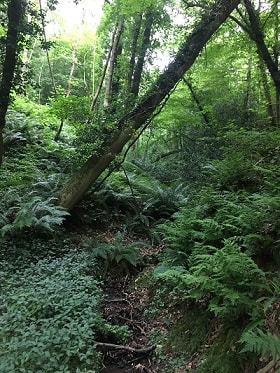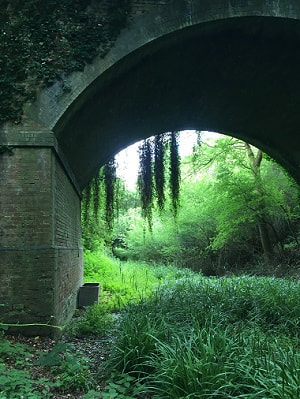 Rina Quinlan, Project Officer, Powdermill Catchment Rina Quinlan, Project Officer, Powdermill Catchment In April 2018 I started my role as a Natural Flood Management project officer for the Sussex Flow Initiative (SFI) in the Powdermill Stream Catchment in East Sussex. SFI has had some fantastic results with ‘slowing the flow’ of the River Ouse catchment since 2014 and as a result, the partnership has been extended to this new river catchment. My job is to help alleviate the rising amount of localised flooding, by using natural measures such as hedgerow planting. In this role I advise on natural flood management (NFM) and work with natural processes (WWNP) to help landowners and communities make their land and homes more water resilient in times of heavy rainfall. More importantly at the moment, it also helps us to be more resilient to drought. The Powdermill stream runs between historic Battle to the north and Crowhurst village to the South. It sits within the High Weald Area of Outstanding Natural Beauty (HW AONB) and its undulating hills, wild flower meadows, ancient and ghyll woodlands are familiar characteristics of this landscape. Water, however, flows rapidly down these steep valleys, causing streams to overflow and high surface water run-off from hard urban surfaces such as roads and houses. Engineering solutions have tried and failed to improve the flooding situation for this catchment and historic drainage practices and canalising of rivers, as well as increasing intensity of land use for urban development and agriculture have exacerbated the scale and severity of flooding. However, recognition for the multiple benefits NFM and WWNP can provide to local communities and wildlife is gaining more and more traction throughout the UK amongst many stakeholders. My role is relatively simple. By creating woody debris dams, tree and hedgerow planting, pond and washland creation, this helps reduce flood peaks and slow the flow of water before it reaches homes at risk. Crucially WWNP also makes our landscapes more resilient to drought by storing more water for longer on the land. If that wasn’t enough, NFM also greatly improves wildlife habitat for a multitude of species, provides shade and water for grazing animals, mimics natural processes, stores and cleans water, and much more. As a passionate conservationist and advocate for ecosystem restoration, I take great delight in explaining to others that much of my role entails mimicking the things that a beaver - one of our natural ecosystem engineers – would do!! It’s a great job, and I’m looking forward to seeing what we can achieve. Rina Quinlan can be contacted at [email protected] or 07595 452038
0 Comments
Leave a Reply. |


 RSS Feed
RSS Feed
